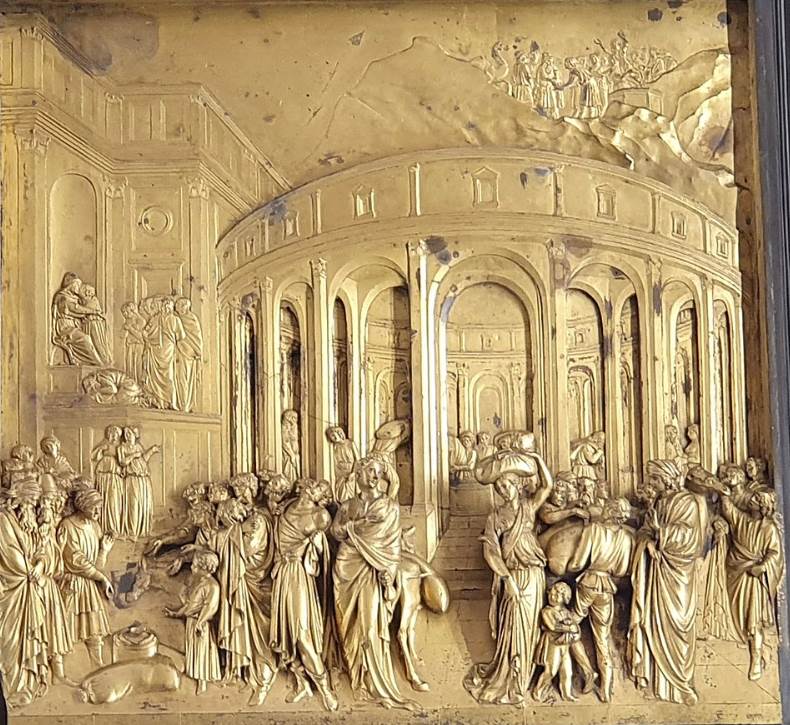The Renaissance was a period of immense innovation in a wide variety of fields. It started in Italy in the 14th century and it spread all across Europe in the following centuries.
A renewed interest in classical antiquity and the goal of surpassing the incredible achievements of ancient times was the main goal of Renaissance artists.
This is reflected in Renaissance paintings and Renaissance architecture as the ideals of Gothic artists were abandoned.
Renaissance sculptors moved away from the idealization of Gothic art and integrated a sense of naturalism into their works. Some of the best-known sculptures in history were created during this period.
Below you’ll find a list of some of the most famous Renaissance sculptures and reliefs, artworks that were reproduced during this important period in human history.
1. Statue of David – Michelangelo
- Date created: 1501-1504
- Dimensions: 517 × 199 centimeters (17 × 6.5 feet)
- Location: Galleria dell’Accademia, Florence, Italy
The Statue of David is without a doubt one of the most famous Renaissance sculptures ever created, if not the best known in history. This monumental work of art was carved from one block by Michelangelo (1475-1564), the famous Italian artist, and polymath of the Renaissance.
The sculpture was commissioned much earlier and initially intended to decorate the roof of Florence Cathedral. because it was too heavy it was placed in a public square in the city instead. Today, a replica decorates the Piazza della Signoria in front of the Palazzo Vecchio.

2. David – Donatello
- Date created: 1440s
- Dimensions: 158 centimeters (62.2 inches)
- Location: Museo Nazionale del Bargello, Florence, Italy
David is a completely different version of the Biblical hero. It was sculpted by Donatello in the 1440s, well over 3 decades after he completed his first version of the same subject. Donatello (1386-1466) completed the first marble version between 1408 and 1409.
It’s a bronze sculpture and renowned for being the first unsupported standing sculpture of the Renaissance and the first nude figure produced since antiquity. The figure only wears a hat and boots and is depicted shortly after he decapitated Goliath.
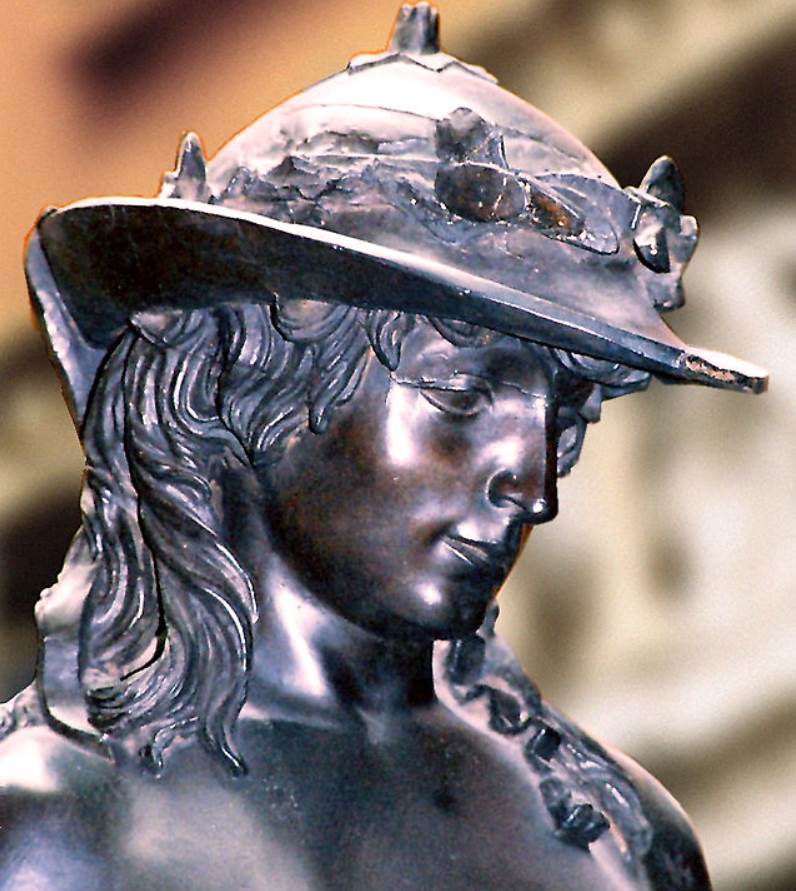
3. Pietà – Michelangelo
- Date created: 1498-1499
- Dimensions: 174 × 195 centimeters (68.5 × 76.8 inches)
- Location: St. Peter’s Basilica, Vatican City
The Pietà is another incredible work of art created by Michelangelo and was completed a couple of years before he started working on David. It was commissioned in the late-15th century to decorate the funerary tomb of French Cardinal Jean de Bilhères.
It decorated the Cardinal’s chapel until it was moved to its current location in St. Peter’s Basilica in the 18th century. It’s a defining sculpture of the Renaissance because it was the first time that a work was created that features the dead body of Jesus Christ on the lap of his mourning mother Mary.
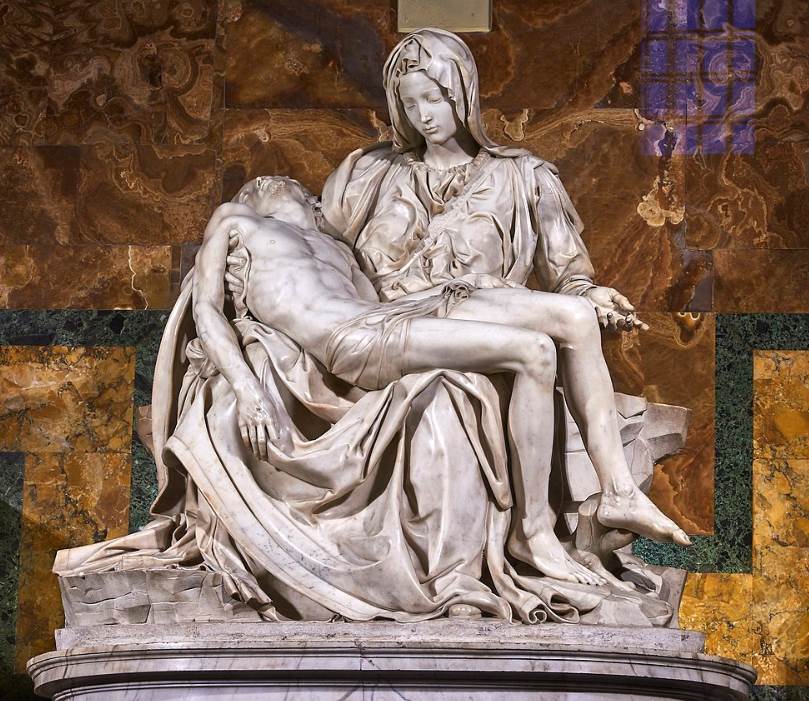
4. Perseus with the Head of Medusa – Benvenuto Cellini
- Date created: 1545-1554
- Dimensions: 519 centimeters (204.33 inches) (including base)
- Location: Loggia dei Lanzi, Florence, Italy
Perseus with the Head of Medusa can easily be described as the Magnum Opus of Benvenuto Cellini (1500-1571), the Florentine sculptor of the Mannerist era or “Late Renaissance.” It’s a monumental bronze sculpture that took 9 years to be completed between 1545 and 1554.
The controversial artist Cellini had recently returned from a period in France after having to flee several times due to his peculiar behavior. This incredible bronze sculpture provided him with a monumental welcoming to his native city and the favor of the Medici family.

5. Equestrian Statue of Gattamelata – Donatello
- Date created: 1453
- Dimensions: Statue: 340 x 390 centimeters (133.85 x 153.54 inches) / Base: 780 x 410 centimeters (307.08 x 161.41 inches)
- Location: Piazza del Santo, Padua, Italy
Donatello was a very influential artist for future generations because he produced several revolutionary works. The Equestrian Statue of Gattamelata is one of them because it was the first full-size equestrian statue that was completed in the Renaissance.
It depicts an Italian captain named Erasmo da Narni who was nicknamed “Gattamelata.” The artist depicted him in a very naturalistic manner compared to earlier Gothic equestrian statues. This monumental work of art still stands in the place it was originally placed in the 15th century.

6. Cantoria – Luca della Robbia
- Date created: 1431-1438
- Dimensions: 328 x 560 centimeters (129.13 x 220.47 inches)
- Location: Museo dell’Opera del Duomo, Florence, Italy
Luca della Robbia (1399-1482) was an Italian sculptor of the Renaissance who specialized in tin-glazed terracotta artworks. His most famous work, however, was his first commission which he completed in the 1430s.
The Cantoria or “Singing Gallery” originally decorated the organ loft of Florene Cathedral. It took seven years before he managed to carve all the reliefs of this magnificent work of art. He was supervised by Filippo Brunelleschi (1377-1446) during this period, the cathedral’s main architect.
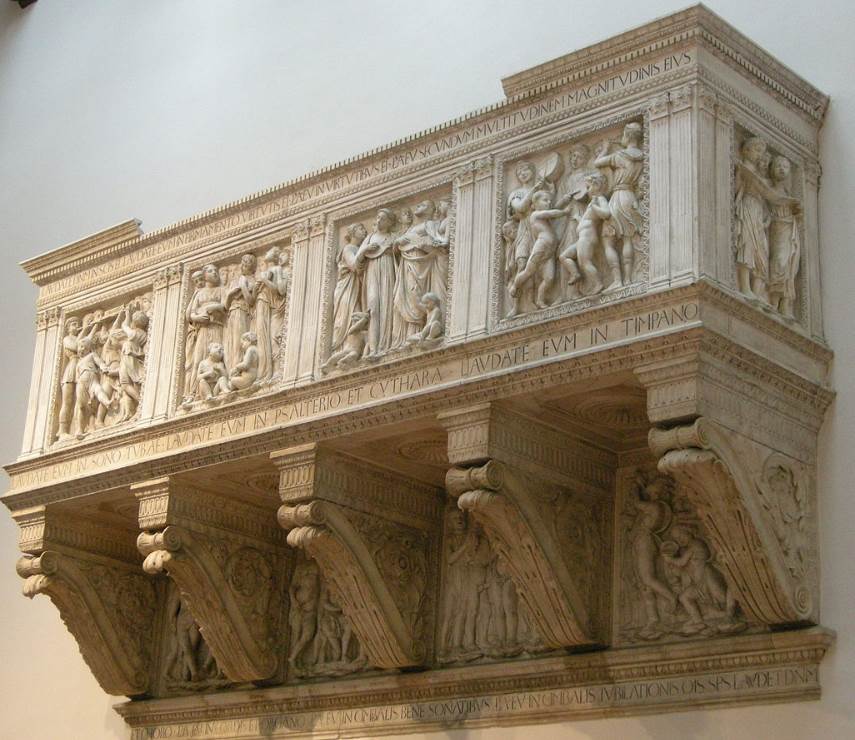
7. Tempietto del Volto Santo – Matteo Civitali
- Date created: 1482-1484
- Dimensions:
- Location: Cathedral of San Martino, Lucca, Italy
Matteo Civitali (1436–1501) was a multi-talented artist from Lucca, a relatively small city in the Tuscany region of central Italy. Most of his famous works are present in his native city, including the freestanding little chapel inside Lucca Cathedral.
The Tempietto del Volto Santo was commissioned to enshrine an ancient wooding carving of Jesus Christ referred to as the “Holy Face of Lucca.” This remarkable monument is situated in the left nave of the cathedral. The statue of Saint Sebastian on the chapel’s exterior was also by the hand of Civitali.
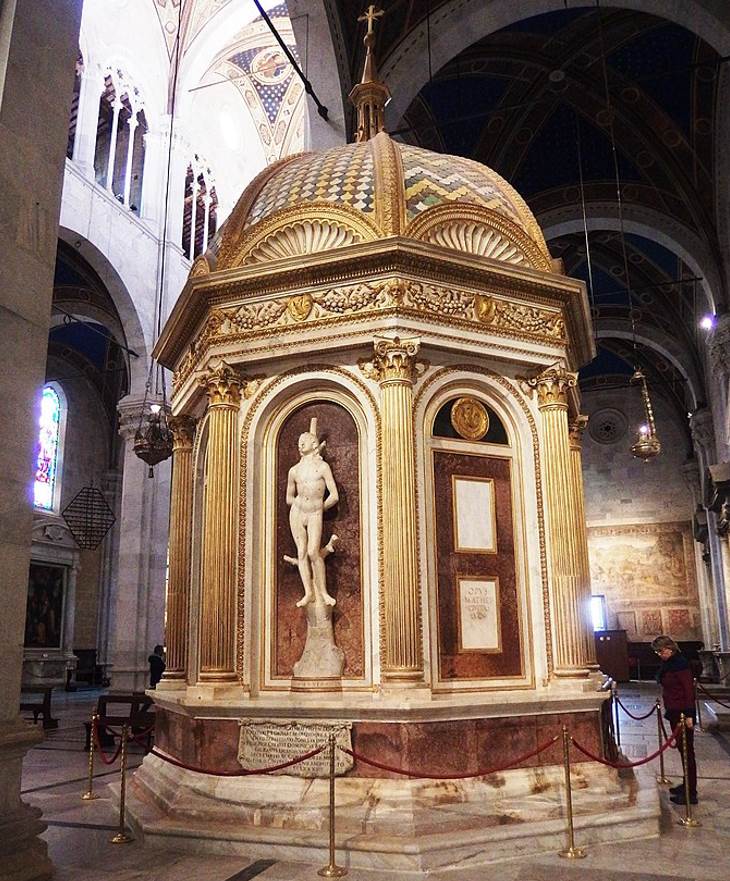
8. Moses – Michelangelo
- Date created: 1513-1515
- Dimensions: 235 × 210 centimeters (92.5 × 82.6 inches)
- Location: San Pietro in Vincoli, Rome, Italy
Moses by Michelangelo is the largest work of a sculptural group that was intended to be much larger than it ended up becoming. It was commissioned in 1505 by Pope Julius II to decorate his tomb. He died 8 years later and the tomb was not completed until 1545.
The scale of the tomb was much smaller than the 40 sculptures intended by Michelangelo. Regardless of this notion, Moses is still one of the most famous Renaissance sculptures ever produced, something stressed by contemporary art historian Giorgio Vasari as well.

9. Judith and Holofernes – Donatello
- Date created: 1457-1464
- Dimensions: 236 centimeters (93 inches)
- Location: Palazzo Vecchio, Florence, Italy
Judith and Holofernes is yet another monumental work of art by Donatello and one of the final major sculptures he completed. It’s a bronze sculpture depicting the story of the Assyrian general Holofernes being beheaded by Judith.
The sculpture was originally placed on the Piazza della Signoria in central Florence but was replaced by a replica later on. Today, the original can be found inside the Palazzo Vecchio, more specifically the magnificent Hall of Lilies or “Sala dei Gigli.”
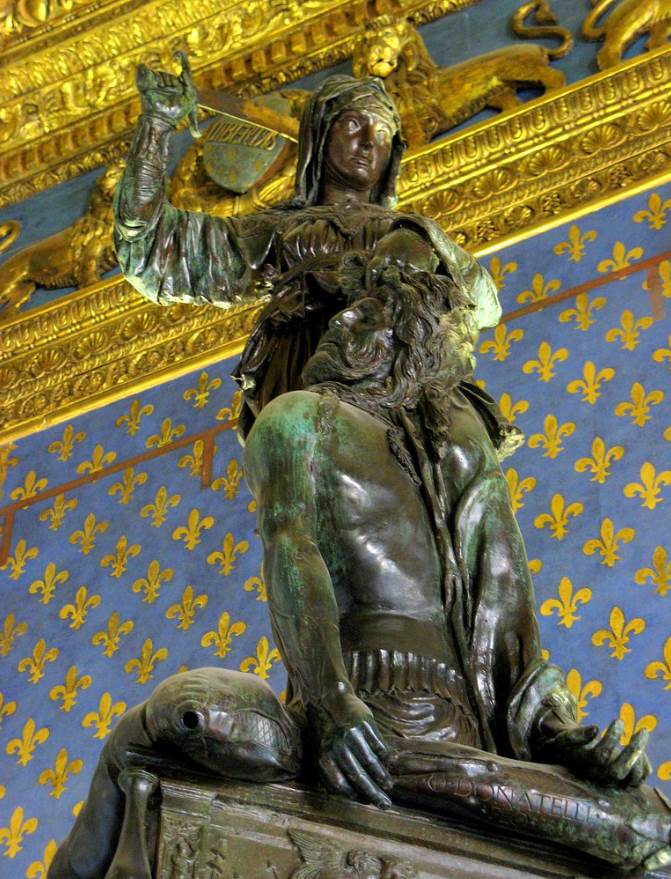
10. Gates of Paradise – Lorenzo Ghiberti
- Date created: 1425-1452
- Dimensions: 599 × 462 × 245 centimeters (235.82 x 181.89 x 96.45 inches)
- Location: Museo dell’Opera del Duomo, Florence, Italy
The Gates of Paradiso is a set of bronze doors that were commissioned for the northern side of Florence Baptistery. It’s one of the most fascinating Renaissance reliefs ever produced and this is emphasized by the fact that Ghiberti worked on them for 27 years.
When the doors were finally completed, they were installed in the eastern entrance of the baptistery. The doors consist of 5 panels on each side that depict extremely detailed scenes from the Old Testament, an incredible work of art to behold.
